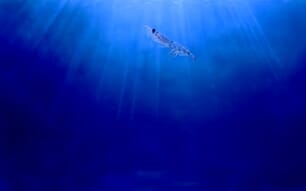This method is recognized in genetics science, and can provide a more accurate and safer selection than by using traditional methods.
The company expects that the use of the method in the first place can provide a significant advancement in resistance to both PD and sea lice, and hence significant savings for the industry.
"We are quite proud over the fact that we succeeded to adopt Genomic Selection for two important traits in our breeding program," says CEO Jan-Emil Johannessen SalmoBreed AS.
"Our Geneticists are very satisfied with the accuracy of the results that we achieved from this method, especially for sea lice resistance that has previously been based only on lice counting results done on family fish.
"It has long been proven that Genomic Selection provides increased genetic gain and reduced rate of inbreeding in species such as cattle, pigs and poultry. Now, SalmoBreed finally implements this technology on salmon as well, initially for PD- and sea lice resistance," says Johannessen.
"Through genomic Selection the breeding values for selection of parent broodfish are calculated using both phenotypic data and information from a large number of DNA-markers. In the case of PD- and sea lice resistance, we utilize approximately 50,000 markers (called SNPs)," elaborated Dr Borghild Hillestad, Genetics and Genomics Manager in SalmoBreed AS.
"For PD resistance, we have previously used family information from challenge tests in addition to QTL testing of candidates. We have used information from a smaller segment on the genome which explains a significant part of the genetic variation of the trait. By using Genomic Selection instead of QTL, we look at the whole genome of the fish and thus present a more complete picture of how the genetic architecture looks for the trait we study, which results in a more accurate selection of broodstock," she explained.
"For sea lice resistance, genetic ranking has been based on family information from challenge tests. We have therefore only been able to select between families, without knowing anything about the properties of the individual broodstock. With Genomic Selection, we can select those individuals showing the highest resistance to sea lice within each separate family, and hence get a stronger assurance that the eggs we supply actually have the desired genetic value of the trait of interest," explained Dr Hillestad.
"By using this technique, we can select the best broodstock from all families and that way increase our genetic progress, reduce the rate of inbreeding and run a more sustainable breeding program.
"This means that it will be possible to reduce the number of sea lice treatments in the sea and result in future cost savings. Fewer lice treatments are also important for fish welfare, environment and working environment," said Johannessen.
"This is a breakthrough for our company, but also for the entire salmon industry that will have the opportunity to make use of the results already from fry produced this autumn," concluded Johannessen.
The R&D leading to Genomic Selection was done in cooperation with Nofima and other partners in a NFR (The research council of Norway) innovation project called "Cost efficient Implementation of genomic selection in Atlantic salmon breeding."
Further development and preparing of the method for implementation to the breeding program, is performed in cooperation with Nofima and Akvaforsk Genetic Center (AFGC), a sister company in Benchmark Breeding and Genetics.




